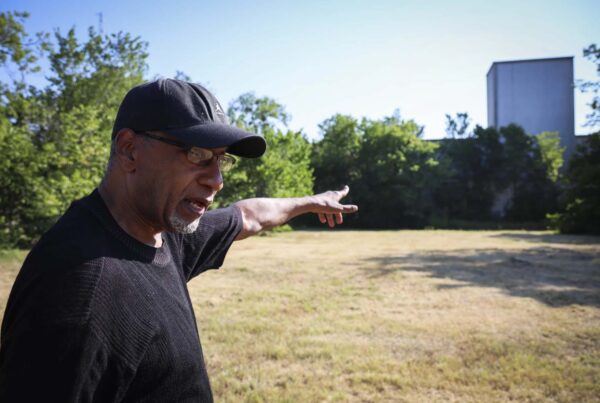Gov. Greg Abbott’s buoy barrier in the Rio Grande near Eagle Pass will stay in place at least another week, following a closely watched court hearing Tuesday.
The barrier is part of Operation Lone Star, the governor’s effort to reduce the number of migrants trying to cross the border into Texas, now facing a legal challenge by the Biden administration.
Jeremy Wallace, who covers politics for the Houston Chronicle, joined the Texas Standard to share more about what unfolded at the court hearing in Austin. Listen to the interview above or read the transcript below.
This transcript has been edited lightly for clarity:
Texas Standard: You were in the courtroom yesterday. What were some of the arguments that the judge heard from the Department of Justice?
Jeremy Wallace: Well, the Department of Justice’s case is all about whether this is a violation of the Rivers and Harbors Act. And that act tells you, no, nobody can put anything into navigable water without the permission of the U.S. Army Corps of Engineers. And so their whole case is that, you know, Governor Abbott and the State of Texas did not first seek permission from them.
And so that was the entire federal government’s case right there, in a nutshell: trying to prove that the state did not ask for permission and they still went ahead and did this unilaterally and put these buoys in the water without any prior federal approval.
What about the attorney’s for Governor Abbott’s administration – why do they say that these buoys do not violate the Rivers and Harbors Act?
Their primary argument was that they were asking a lot of questions about the navigability of the water. Even though the Rio Grande is the fourth largest river in North America, they question whether or not it can be considered a navigable waterway still, because there’s not commercial traffic along the water. That’s a pretty shallow area of the Rio Grande River, and so mostly what you see in there are small personal craft, things like that.
You know, they used airboats when they were deploying the buoy barrier. So they’re saying, well, you can’t get ships up and down the river, and they think there’s precedent in past cases that will help them say, see, the Rio Grande is not navigable; we do not need your permission to put these in the water.
And so that’s the central part of their their case, although they did try repeatedly to bring up immigration, and the judge shut them down every time. He said, this case is not about immigration; we’re not talking about Joe Biden’s border policies. We’re talking about “did you violate the Rivers and Harbors Act?” That’s what we’re going to remain focused on. So he kept trying to keep it down the line here.
» GET MORE NEWS FROM AROUND THE STATE: Sign up for our weekly ‘Talk of Texas’ newsletter
Meanwhile, I know that we have reported in the past that Mexican officials are unhappy about this barrier as well. Did any more details emerge yesterday about what they have to say about how their interests have been affected?
Absolutely. I thought that was one of the most interesting pieces of the whole day. We learned how much more upset Mexican officials have been than we first thought.
We heard testimony from State Department officials who said that there were three official diplomatic cables that were sent to the U.S. government. They had direct talks with Secretary [of State Antony] Blinken. The Mexican president several times throughout this summer has raised the question of buoys in his daily press briefings and, you know, in other meetings with U.S. officials that had nothing to do with immigration.
You see there’s been this constant pressure on the federal government to do something about this because they’re worried about their sovereignty – as much as, you know, Governor Greg Abbott says he’s protecting the sovereignty of the U.S. from incursion from Mexican cartels, the Mexican officials are saying if you’re doing stuff unilaterally and some of it in our territory, you’re infringing on our sovereignty. So there’s a concern on their end that, you know, Texas is actually infringing on their sovereignty.
So that’s created a lot of tension. Mexican officials have a high sensitivity to the U.S. imposing its will on them. That does not play well within the Mexican populace. And so they have to be careful how far Texas takes us.
What happens next with this injunction and with the case at large?
Well, there’s time still. Those buoys get to sit out there for a little bit longer, that’s what we know for sure. The judge gave both sides of this case until at least Friday to file a closing argument in writing to him, and then he’ll make a decision off of that. But if he makes a decision to pull those buoys, that’s not going to happen right away.
So if he makes a decision next week, it would take at least 10 days, according to some of the filings, for the buoys to be removed. And we heard from a contract that said it could take 3 to 4 weeks for them to be fully removed from the river. So we’re looking at another month of this drama, even if the judge rules in favor of the feds and forces the state to pull those buoys out immediately.















